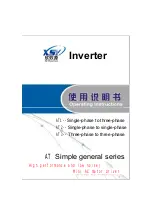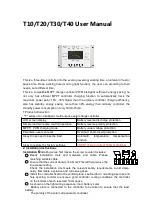
16
S
↔
P (SERIAL
↔
PARALLEL) CONVERTER (128K)
or parallel cable, or an identical cable you know is OK. If communication
goes smoothly for both of your devices and their associated cables when the
Converter isn’t involved, go to Step 10.
If there is still a problem after you make these substitutions, any of
several device-related difficulties may be occurring. Some examples:
• One of the attached devices might be set up to communicate
through the wrong port.
• One of the device ports is broken.
• One of the attached devices or its software may be hitting a fault
(a bug in its programming) when it tries to communicate.
• A software package or a driver on one device might be incompatible
with the other device.
The problem could also be highly application-specific. For example,
the polarity option on HP
®
LaserJet
®
printers is often set incorrectly. You
might want to consult the manuals of the devices and software involved in
the problem as you carefully investigate your application.
10. If the problem still isn’t solved, call us.
B. Converter-Pair (Parallel Distance Extension) Systems Only
1. Make sure the attached devices are plugged in and turned on. If
they are, go to Step 2.
2. Make sure all of your cables are firmly seated at both ends. If all
cable connections are solid, go to Step 3.
3. The transmitting device or its software might have crashed. If the
transmitting device and its application appear to be functioning normally,
go to Step 4.
4. Check the Converters’ DTE/DCE slide switches and the word-
structure and flow-control settings of their DIP switches. If they are
correctly set for communication with each other (see
Section 3.2.2, Step 5
),
go to Step 5.
Summary of Contents for PI035A
Page 26: ...NOTES...







































